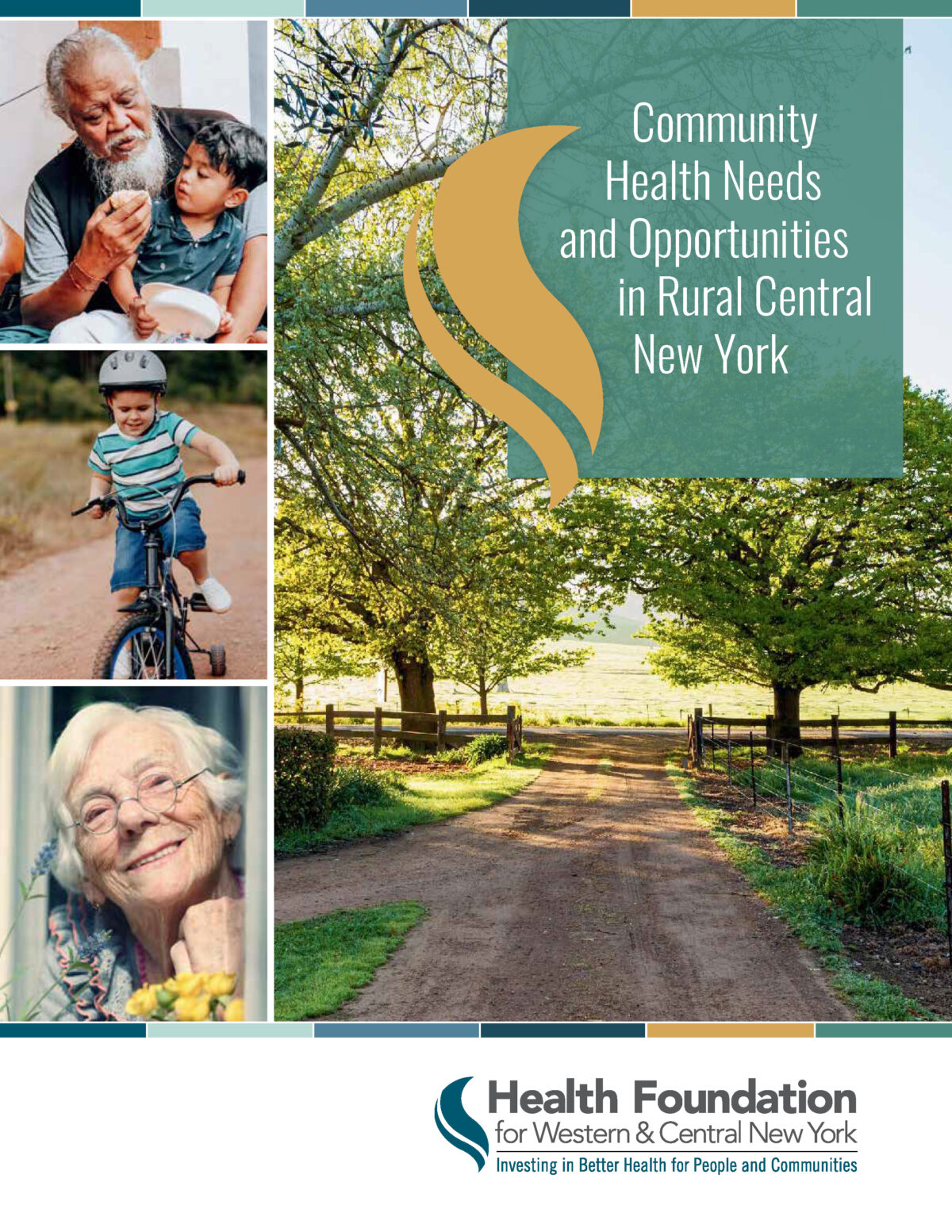New report outlines challenges, opportunities in Cayuga, Cortland, Madison and Oswego counties
(SYRACUSE, NY) The Health Foundation for Western & Central New York has released a new report highlighting the social and systemic factors that drive poorer health outcomes in Cayuga, Cortland, Madison, and Oswego counties. Read the report here.
The report, Community Health Needs and Opportunities in Rural Central New York, is based on dozens of interviews with staff at agencies serving these counties and analysis of data related to sociodemographic factors, perinatal health, oral health, behavioral health, and home health care. As part of the Health Foundation’s Transform Rural Health campaign, it is a companion piece to a Health Foundation report on western New York’s Southern Tier published in 2022.
Some key findings are:
- About 2 in 5 households in rural CNY include people struggling to afford basic needs. Service providers are working hard to connect people with food, transportation, housing, and health care. While each county does have pockets of affluence, they also have towns and small cities where people live in extreme poverty.
- Many health outcomes are worse in rural CNY than in NYS overall. Infant mortality rates, tooth loss, and binge drinking are just a few of the indicators that are worse in rural CNY compared to Onondaga County and/or New York State.
- Health disparities exist for people who are low-income and people from marginalized identity groups. Economic disparities are well-known, but data also reveal extreme disparities in health outcomes for rural CNYers identifying as Black, Hispanic, multiracial, LGBTQ+, and disabled.
- People have limited choices for health care providers, and access to care is further limited by workforce challenges and low reimbursement rates. Agencies have a hard time hiring and retaining people to work many of the jobs that are most needed to provide care to people. Safety net providers lose money on some services because reimbursement rates are so low, and this impacts their ability to build capacity to better meet patient needs.
- Funding for rural health is unstable and insufficient. In recent decades, funding for many agencies and programs has remained flat, declined, or disappeared altogether. Local partners do a good job filling gaps and meeting local needs with few resources, but they are constantly challenged to find ways to sustain programs and to provide services at the level that the community deserves.
The report discusses many findings that collectively indicate that there is an urgent need to invest more in improving the health of rural communities. In addition, it highlights some examples of promising strategies for improving health outcomes and equity in rural CNY.
“Our new report highlights how social and systemic factors are main drivers of the health of our neighbors in rural central New York, and that investing in addressing those factors is essential to improving health outcomes,” said Nora OBrien-Suric, PhD, President, Health Foundation for Western & Central New York. “This supports an overarching message of the Transform Rural Health campaign: Disparities in rural health often mirror the systemic barriers that lead to poor outcomes in other communities. By addressing these issues, we can create a ripple effect that improves health equity for all.”
ABOUT THE HEALTH FOUNDATION FOR WESTERN & CENTRAL NEW YORK
The Health Foundation for Western & Central New York is an independent private foundation that advocates for continuous improvement in health and health care for the people and communities of Western and Central New York. The Health Foundation’s vision is a healthy central and western New York where racial and socioeconomic equity are prioritized so all people can reach their full potential and achieve equitable health outcomes. For more information, please visit www.hfwcny.org.
###



